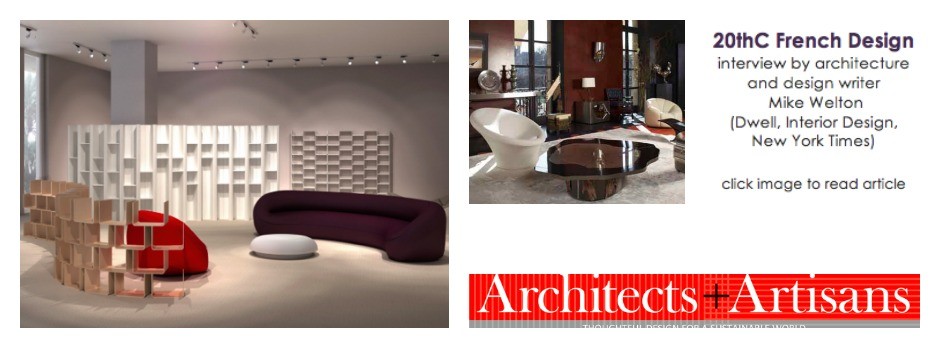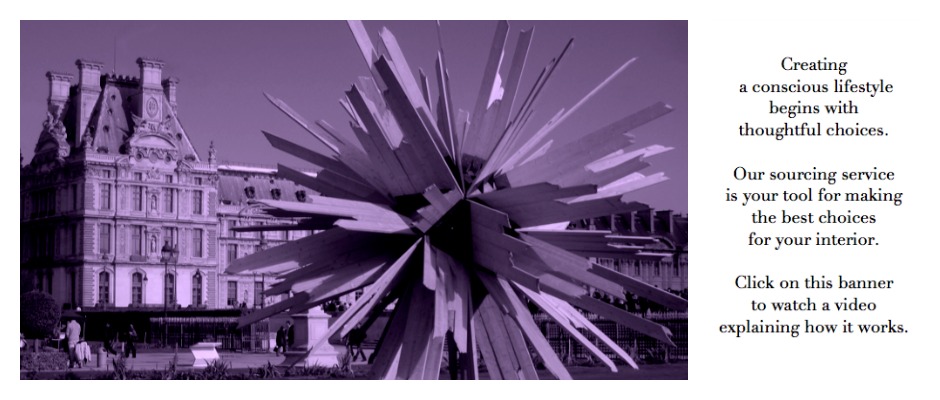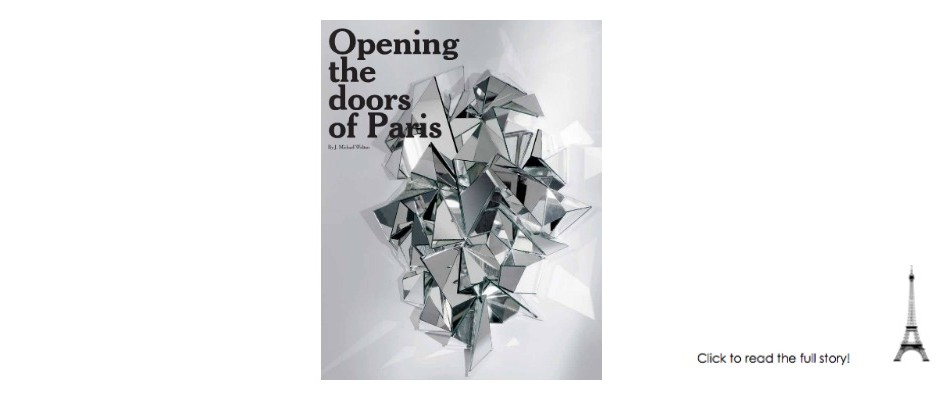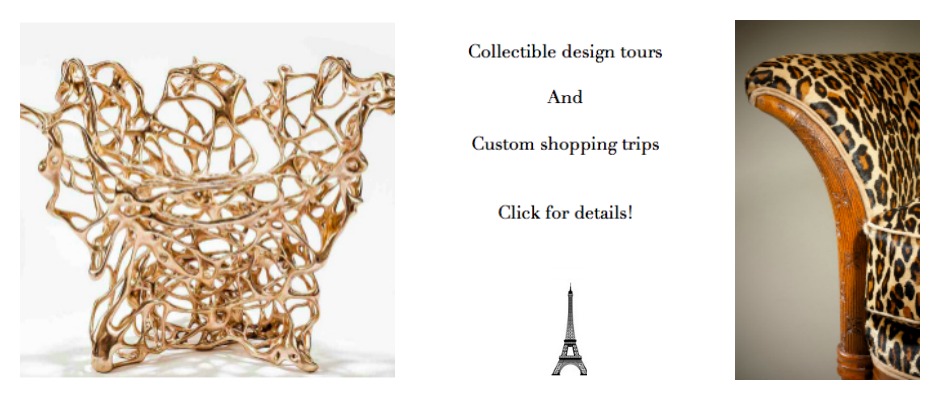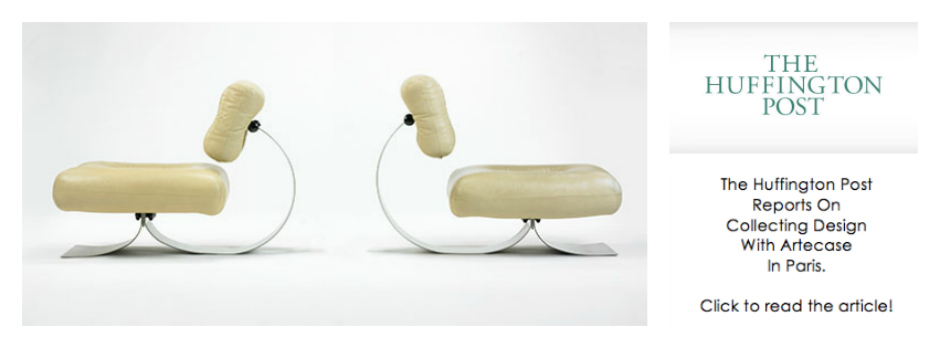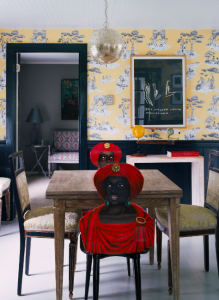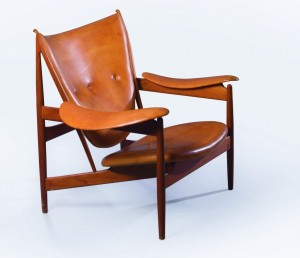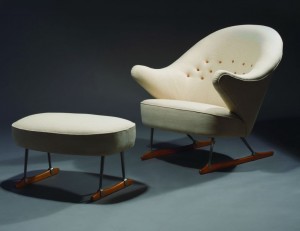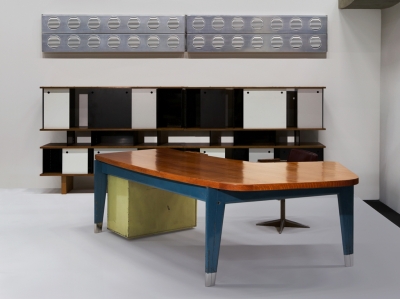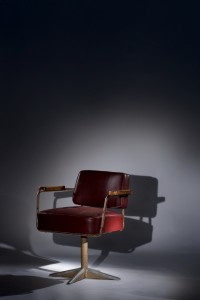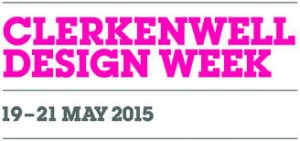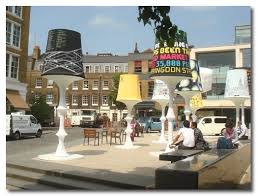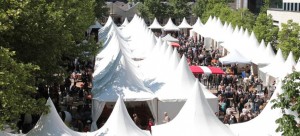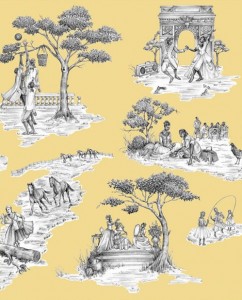
The Harlem Toile de Jouy pattern by Sheila Bridges is represented in the Cooper Hewitt Smithsonian National Design Museum’s permanent wallpaper collection.
This year is the Bicentennial anniversary of the death of Christophe-Philippe Oberkampf (1738-1815), the founder of the royal manufacture of the celebrated Toile de Jouy printed cottons based in Jouy-en-Josas near Versailles. Oberkampf created the first company in France which used copperplate printing on cotton in place of printing with wooden blocks. The finer lines on the copperplates allowed for greater variation in light and shade and the creation of larger repeat patterns. Sheila Bridges, the creator of the brilliant Harlem Toile de Jouy wallpaper was in France this week for the Opening Night of the ‘Toile de Jouy Regards Contemporains’ exhibition which presents contemporary reinterpretations of this renowned and traditional printed pattern. We were thrilled to have the opportunity to talk with the very charming and inspiring Sheila Bridges.
“I have always been intrigued and inspired by the historical narrative of the decorative arts, especially traditional French toile with its pastoral motifs from the 1700s”, Bridges has said. The Harlem Toile de Jouy wallpaper is hand screen printed involving several artisans in its production. Sheila spoke to us of the value she places on the collaboration between designer and craftsman and the symbiotic nature of that relationship in her work. Her love of the creative process was clear when talking of the constant ideas she has “to create, playing with forms and colors and exploring themes”.
We love the humorous satire she uses in her contemporary narrative in her Haarlem Toile de Jouy.
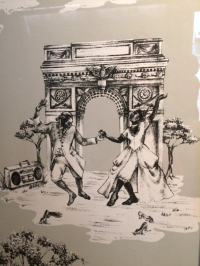
What inspired you to create Harlem Toile?
I’ve always loved toile fabrics and wallpapers but never could find one that spoke to my own personal experience as an African American woman living in Harlem. I created Harlem Toile De Jouy to tell that story and to lampoon some of the stereotypes that are often associated with African Americans.
Do you think its important for design to tell a story?
Not all designs have to tell a story but I do think designs that do have a narrative help to differentiate themselves from the millions of other designs that are in the marketplace.
Why did you choose the medium of wallpaper?
Wallpapers have changed dramatically over the last decade and have gained tremendous popularity in the United States. Most people still think that wall coverings are very stuffy and traditional but now there are so many fresh, bold and interesting options available. I love grasscloths and textured wallpapers and use them frequently for clients. New technology and digital printing have also made wallpapers more accessible and affordable.
How do you think Haarlem Toile fits in with the evolution of the Toile de Jouy history?
I think that my Harlem Toile design fits into the evolution because it is reflective of a more contemporary and different cultural experience than the original toile. My toile tells a story that hasn’t been documented in that specific medium. I loved playing with the motifs and incorporating fun, personal elements into my wallpaper since most toiles traditionally depicted only very pastoral scenes.
The Harlem Toile looks so vivid and striking with these two fabulous chairs by Fornasetti. If you happen to be in the vicinity of the Musée des Arts Decoratifs, drop in and see one of these chairs in the
Fornasetti exhibition there.
~~~~~~
ARTCURIAL SCANDINAVIAN SALE:
20th May 2015
Artcurial are holding their first sale totally devoted to
Scandinavian Design. Curated by new Design Consultant, Aldric Speer (a renowned collector of Scandinavian Design), over 100 pieces will go under the hammer. When asked about the enduring appeal of Scandinavian Design, Speer says: “Its because Scandinavian designers were taught they should always think first about an object’s function. The constraint of making something functional turned out to be liberating: they made something beautiful out of it”. Here are a couple of exceptional pieces in the sale.
Teak and original cognac leather FJ49 ‘Chieftain’ chair (1949) by Finn Juhl, 36,1 x 40,75 x 36,22in.
Estimate €150,000-250,000.
In Phillips in London in 2012, a Chieftain chair was sold for £422,500 after a 20-minute bidding war. This is the world record for a a piece of Scandinavian furniture sold at auction. It’ll be interesting to see what this one goes for.
~~
Teak, steel and leather 160 ‘Sleigh’ armchair and ottoman (1953) by Borge Mogensen.
34,25 x 32,28 x 33,46in. 15,74 x 29,52 x 18,89in.
Estimate €40,000-60,000.
We loved Thomas Lemut’s ‘Luge’ lounge chair we included in our post for AD Collections recently. A contemporary take on the theme.
~~~~~~
For up to the minute collectible design news, discussions and visual inspiration join us on social media.
Instagram and Pinterest – daily inspiration.
Twitter (for market updates)
On Linkedin we invite you to join: Design Link – Collectible Design Market Network – a growing network of resources, designers, journalists, collectors and enthusiasts discussing ideas and questions about this growing market.
Check our Instagram this week for pieces from the upcoming Scandinavian sale at Artcurial.
~~~~~~
Collectible Design Market News Highlights and Events

Design Miami/Basel is celebrating its 10th edition next month.
16-21 June 2015.
45 Galleries participatingAre you interested in going to this fair?
Artecase/Design Link will offer a group tour including an overview of the market for collectible design and a tour of the booths to look at some of the highlights and meet the gallerists/designers when present.
Let us know if you are interested!
contact@arte-case.com
~~~~~~
Here’s a sneak peek of what you’ll be seeing at the Fair!
Downtown Gallery at Design Miami/Basel 2015
Specialised in 20th century ‘mobiliers d’architects’, particularly the works of Prouvé, Perriand and Jeanneret, Laffanour of
Downtown Gallery was the first person in France to show the work of Charles and Ray Eames, Mathieu Matégot, George Nakashima and George Nelson.
~~
Présidence Armchair / Jean Prouvé, ca. 1950
Steel and aluminum structure, arm-rest in oak, seat and backrest in red leather.
67 x 60 x 73 cm
Courtesy of LAFFANOUR – Galerie Downtown
~~~~~~
Multiple Art Days (MAD), the first fair for limited art editions will take place at
La Maison Rouge 10 Boulevard de la Bastille, 75012 Paris
22-24 May 12h00-19h00
Don’t miss this chance to attend the Collectors Preview at 18h00 on the 22nd. Artecase is offering a free ticket to the first four people to get in touch with us.
contact@arte-case.com
~~~~~~
Clerkenwell Design Week in London is hosting a great program of events. View them
here and register your place.
~~~~~~
If you’re going to be in Vienna this weekend, the MAK Design Lab is staging a show with the Viennese design tim EOOS to interact with its permanent collection. From robotic sofas to toilets, this exhibition is quietly revolutionary. Curated by Thomas Geisler, the show explores the MAK Design Lab ethos that people give meaning to objects when they use them so that the things we live with are enhanced through their functional relationship with us. Show runs until 17th May.
~~~~~~
Don’t miss the 32nd edition of
Les Puces de Design at the charming Bercy Village in Paris (28-31 May). This small but interesting fair has a lot to offer and is well worth a visit.
~~~~~~
Wishing you all a great weekend!
~~
Inquiries : contact@arte-case.com or 06 47 25 09 66

